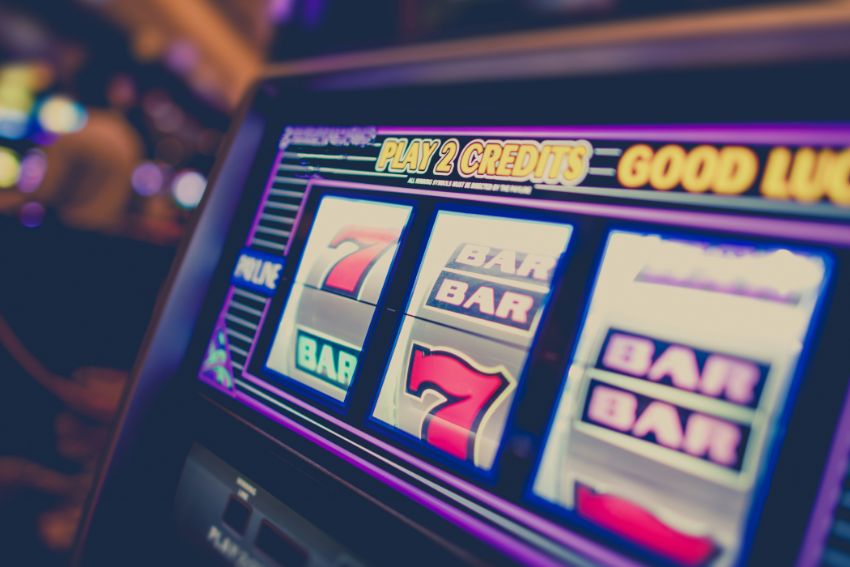Understanding the Psychology Behind Slot Machine Design
When you enter a casino, you might notice that slot machines are particularly engaging. This is not merely a matter of chance; it is grounded in scientific principles.
Designers employ a combination of striking visuals, engaging sound effects, and complex reward systems to capture and retain your attention. These elements are carefully designed to activate the brain’s reward centers, making each spin engaging.
The psychology underlying these designs is intricate, involving strategies aimed at prolonging playtime and fostering emotional investment. This analysis explores how these tactics work together to create an immersive user experience.
The Role of Visuals
Visual appeal plays a significant role in slot machine design. Upon entering a casino, the bright lights and vibrant colors of slot machines are immediately noticeable.
Designers employ bold graphics and animations to make each machine distinctive and appealing to potential players. Themes ranging from ancient civilizations to popular movies are utilized to create an engaging experience.
Every detail, from the symbols on the reels to the background images, is carefully crafted to maintain player interest. The visual hierarchy directs attention to key elements such as the spin button and paylines.
Sound Effects Impact
When you hear the jingles and chimes of a slot machine, your brain’s auditory response can trigger emotional reactions that keep you engaged.
These sounds create excitement and anticipation, making the experience more thrilling.
Understanding how these auditory cues affect your emotions is essential in grasping the overall design strategy of slot machines.
Auditory Stimulus Response
Slot machines utilize sound effects to create an immersive experience for players. Each win, regardless of its size, is accompanied by cheerful sounds. These auditory cues aren’t arbitrary; they’re carefully designed to maintain player engagement.
When players hear the sound of coins or upbeat music, their brain’s reward system is activated, which can encourage continued play. These sounds work alongside visual effects to enhance the overall experience.
Even the subtle ‘clicks’ as reels come to a stop are designed to build anticipation. By understanding these auditory stimulus responses, one can better appreciate the psychological strategies employed to make these sounds appealing.
Emotional Triggers Sound
Sound effects in slot machines play a critical role in eliciting emotional responses from players. When players hear sounds like the jingle of coins or celebratory music following a win, their brains release dopamine, leading to feelings of pleasure and excitement.
These sounds are intentionally designed to keep players engaged and encourage continued play. Upbeat tunes and winning chimes create a sense of achievement, even when the monetary reward is minimal.
Conversely, the absence of sound or the use of dull sounds during losses makes these moments less memorable, directing players’ focus more toward their wins.
Reward Systems
Slot machines engage players primarily through their sophisticated reward systems designed to maintain interest and encourage continued play.
These machines utilize variable ratio reinforcement, where rewards are given at unpredictable intervals. This uncertainty adds an element of excitement to each spin, as the timing of the next win remains unknown.
Additionally, small but frequent payouts help sustain player motivation by providing consistent, albeit modest, incentives to keep playing.
Visual and auditory cues, such as flashing lights and celebratory sounds, further enhance the sense of achievement associated with each win, regardless of its size.
By offering a combination of larger and smaller rewards, slot machines effectively stimulate the brain’s reward pathways.
This design strategy ensures that the experience remains engaging and pleasurable, even in the absence of significant wins.
Near Miss Phenomenon
The near miss phenomenon occurs when slot machines display a combination that almost results in a win. This isn’t accidental; slot machines are programmed to generate these near misses intentionally.
For example, when two matching symbols appear and the third symbol nearly aligns, it triggers a psychological response. The brain interprets this as nearly winning, which can be more stimulating than a complete loss.
This near miss can encourage continued play, as it creates the perception that a win is imminent. The design leverages emotional responses, fostering the belief that persistence might lead to a win.
Understanding this phenomenon reveals how slot machines use near wins to maintain player engagement.
Variable Rewards
The concept of variable rewards plays a significant role in maintaining player engagement with slot machines. Unlike fixed rewards, variable rewards are unpredictable, creating an element of surprise.
When players activate the machine, they’re uncertain whether they’ll win a large prize, a small prize, or nothing at all. This uncertainty stimulates the brain’s reward system by releasing dopamine, which increases the likelihood of continued play.
Slot machines leverage this psychological principle to sustain player involvement. By varying wins and losses in a seemingly random pattern, they maintain a level of excitement and anticipation.
This unpredictability appeals to the human desire for novelty and excitement, making it challenging for players to disengage from the game.
Player Experience
Understanding the impact of variable rewards is crucial for examining the broader player experience with slot machines. When engaging with these machines, the experience extends beyond the potential for monetary gain to encompass a range of sensory and emotional stimuli.
The sounds, lights, and animations are carefully designed to maintain player engagement and interest. Each spin introduces a moment of anticipation, eliciting an emotional response regardless of the outcome.
Even minor wins are often marked by visual and auditory cues such as flashing lights and upbeat sounds. These elements create a sense of reward, reinforcing the player’s engagement even in the absence of significant gains.
This continuous sensory stimulation fosters an immersive environment, contributing to the sustained interest in slot machines. By understanding these components, one can better comprehend how slot machines effectively captivate and retain players’ attention.
Design Tactics
When you look at slot machines, you’ll notice how their visual appeal, sound effects, and reward systems grab your attention.
These design tactics aren’t random; they’re carefully crafted to keep you engaged.
Let’s explore how each element plays an essential role in the overall experience.
Visual Appeal Strategies
Slot machines utilize a variety of visual appeal strategies to attract and retain players. Bright, vibrant colors are employed to stimulate excitement and improve mood, which can increase the likelihood of engaging with the game.
Familiar symbols and themes, such as fruit icons or popular movie references, are used to create a sense of comfort and recognition among players. Additionally, flashing lights and animations are designed to capture and maintain attention, encouraging prolonged play.
The layout of the machine is also strategically designed; large, clearly marked buttons facilitate ease of use, allowing players to continue playing with minimal effort.
These visual elements are carefully implemented as part of a broader strategy to enhance player engagement and encourage longer playing sessions.
Sound Effects Impact
Sound effects play a crucial role in slot machine design, significantly affecting player engagement and behavior. Auditory cues, such as jingles and celebratory sounds, are often associated with rewards and wins, even when the actual payout is minimal. These sounds can create a sense of excitement and encourage prolonged play.
Designers utilize a range of sounds, from the spinning of reels to the clinking of coins, to enhance the sense of anticipation and excitement. Frequencies and rhythms are carefully chosen to stimulate the senses and make the experience more immersive.
Through the strategic use of sound, designers can subtly influence players to continue playing in pursuit of a win. When at a slot machine, one can observe how these sounds are intentionally crafted to maintain player engagement and enhance the overall gaming experience.
Reward System Mechanics
Slot machine designers carefully develop reward system mechanics to optimize player engagement and retention. They employ variable reward schedules, where the timing and size of wins are unpredictable, encouraging continued play.
By combining small, frequent wins with occasional larger payouts, designers maintain a level of excitement and anticipation. Near-misses, where symbols nearly align for a significant win, activate the brain’s reward centers and often motivate players to keep trying.
Additionally, progressive jackpots, which increase over time, offer the potential for substantial payouts. This array of tactics ensures that players remain engaged, continually pursuing the next possible win, thus reinforcing ongoing play and making it challenging to disengage from the machine.
Frequently Asked Questions
How Do Regulatory Bodies Influence Slot Machine Design?
Regulatory bodies influence slot machine design by setting strict guidelines. You’re required to meet payout percentages, implement responsible gaming features, and guarantee fairness. They shape how machines operate to protect players and maintain industry standards.
What Is the History of Slot Machine Development?
You see, the history of slot machine development starts in the late 1800s with Charles Fey’s Liberty Bell. Over the years, they’ve evolved with technology, incorporating video screens and random number generators to enhance player engagement.
How Do Cultural Differences Affect Slot Machine Preferences?
Cultural differences shape slot machine preferences. You might prefer different themes, symbols, or gameplay based on your background. In some cultures, certain colors or motifs are luckier, making them more attractive to players from those regions.
What Ethical Concerns Are Associated With Slot Machine Design?
You should consider ethical concerns like exploiting addictive behaviors, targeting vulnerable individuals, and creating misleading winning probabilities. It’s essential to advocate for responsible design practices that prioritize player well-being over maximizing profits.
How Is Player Data Used in Refining Slot Machine Features?
You might wonder how player data’s used in refining slot machine features. Casinos analyze your play patterns, preferences, and reactions to optimize game designs, keeping you engaged longer and maximizing their profit.
Conclusion
You’ve seen how slot machines use bright visuals and engaging themes to grab your attention. Sound effects aren’t just for show; they tap into your emotions, enhancing the thrill. Reward systems, especially variable payouts and near misses, keep you hooked by playing with your brain’s reward system. All these elements, combined with savvy design tactics, guarantee you stay invested. Understanding these strategies can help you recognize why you’re drawn to keep playing.

